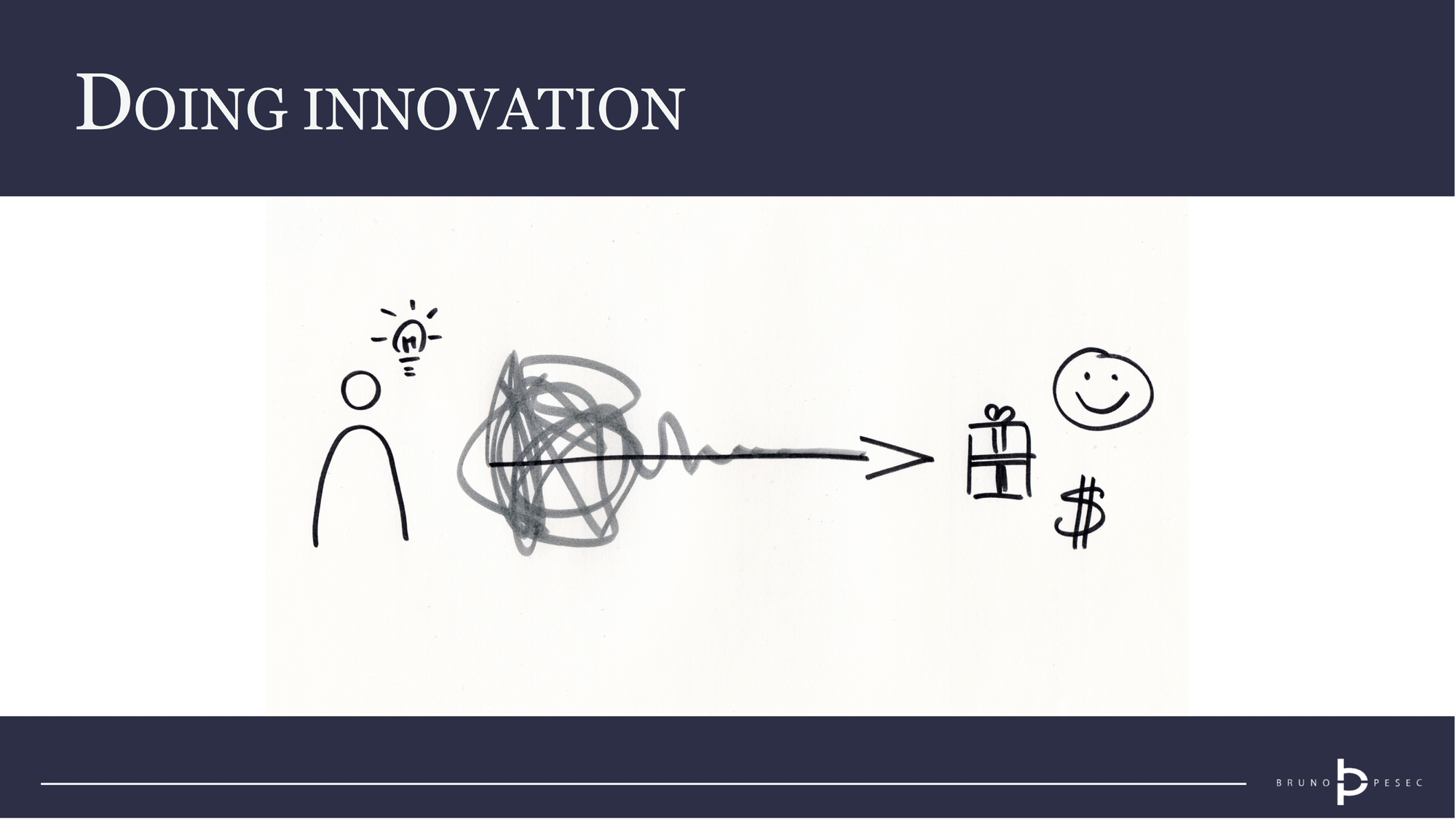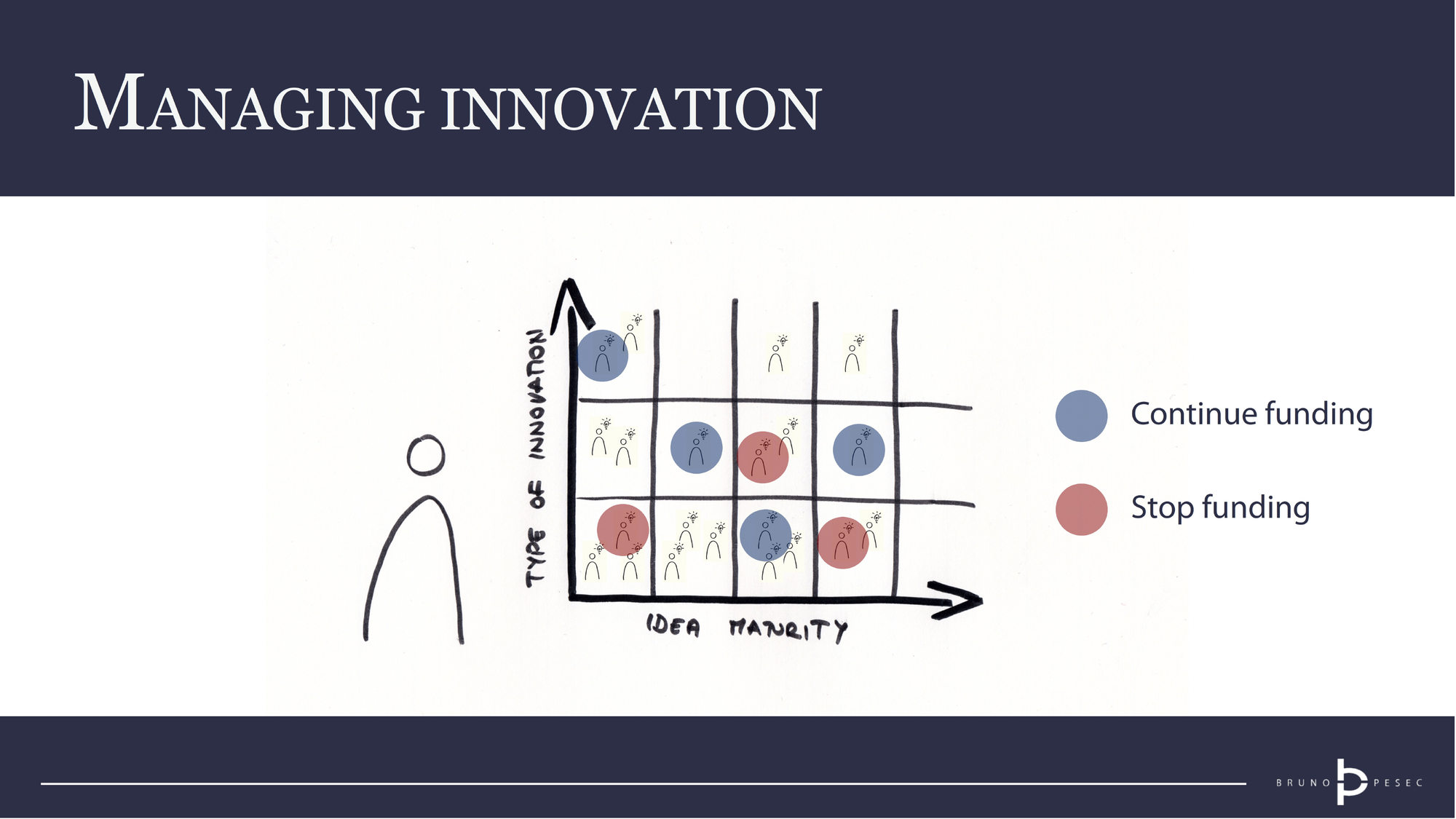Doing and managing innovation
What is the difference between doing and managing innovation, and why should you care?

For a long time innovation – just like entrepreneurship – has been considered a matter of luck, something that magically happens when the right creative minds meet.
I do not share that belief.
Being lucky is great, but not something that can be counted on consistently.
Yeah, fortune favours the bold, but that's no excuse to do random things, burning cash and hoping for the best.
Fortune favours the prepared mind is a better take on it.
An can organisation prepare itself by improving two critical practices – how they do and manage innovation.
Prior to discussing that further, I'll share my view of innovation.
Innovation, a word with a thousand faces
Without getting too technical, and being as pragmatic as possible, innovation can be defined as something new creating value.
Newness is not the same as novelty. It shouldn’t be considered exclusively in terms of elapsed time. Rather, I propose you ask yourself have we delivered this value proposition to that specific market, to serve that specific need?
If the answer is a resounding yes, then you are most likely dealing with incremental improvement. If the answer is no, congratulations, you can consider it new.
Value creation must be two fold: (1) external, helping customers do something better, and (2) internal, making a positive contribution to the bottom line.
Newness without value is invention.
Value without newness is improvement.
Newness and value together are innovation.
Doing and managing as one
Doing innovation is much more than brainstorming ideas and capturing them on colourful post it notes. That’s the easiest and most trivial part! Executing them is the real challenge.
Discerning thoughts from ideas, uncovering assumptions, continuously learning about them and systematically reducing risk, iteratively transforming idea into a product, service, or business, taking it to market and scaling it...
How you do all of the above has direct implication on how efficient your innovation processes are.

Governing innovation is about creating clear directions and making investment decisions. It is also about having appropriate meeting places, decision arenas, measurements and control mechanisms.
Funding and measuring innovative initiatives require a different set of metrics than you might be used to. It is unrealistic that early stage ideas will produce noticeable ROI within the first year.
That doesn’t mean you should kill them off, or even worse, fund them and let them run unmonitored for five years. It does mean you must measure their progress differently – for example the amount of validated learning and reusable knowledge created to date.
Clear innovation strategy acts like a north star for your employees. When you are explicit about the areas you want to focus on, and type of investments you are willing to make, then you will also receive relevant and strategically aligned ideas.
Since it is impossible to guarantee the success of each individual innovation initiative, it is paramount to assemble a portfolio of initiatives. How you structure it will depend on the amount of risk you are willing to take.
Effective governance should result in the best possible investments with whatever resources and knowledge you had at the time of making an investment decision.

Betterment and progress as one
If you solely focus on doing and managing innovation you are running a high risk of creating an impressive amount of waste.
How so?
If the organisation itself is not adapting appropriately then the initiatives that are maturing – i.e. becoming ready for scaling – might be organically rejected. That might happen for a multitude of reasons, some being legitimate.
Having a single team or section that is considered to be way ahead of the organisation can easily trigger organisations’ immune system, which in turn makes it difficult for them to take the idea further. It easy to joke with the not invented here syndrome, but it’s never fun when it rears its ugly head in real life.
Although it might seem counter intuitive, improving a little across multiple fronts is more sustainable than improving a lot on a single front.
The question then becomes what is the smallest part of the organisation that should take a step forward?
In martial arts there is a concept called striking-three-points-at-once. When going in for a throw three points need to be forced out of balance at the same time. If you apply excessive or inadequate force to any of these three points, then the throw will either fail or won’t be as strong as it can be.
The same concept can be applied here – if organisation wants to improve the profitability of its innovation efforts then they must orchestrate and improve across all three dimensions at once, one step at a time.
Gambler's fallacy
It's easy to blame the competition or a situation when things go awry.
It's easy to claim our own genius when things go well.
But why gamble?
Beyond wasting money, there is a waste of human potential and time, which is far worse.
To continuously invest into practices of doing and managing innovation is to move away from gambling:
- Doing innovation focuses on processes for taking ideas from concept to reality.
- Managing innovation focuses on processes for aligning innovation with the rest of the organisation's activities as well as matters of strategic choice.
- Succeeding with innovation has organisational consequences which must be accounted for, and will include some form of either gradual or rapid change.
Discipline pays off.
Fortuna eruditis favet!
Bruno Unfiltered
Subscribe to get the latest posts delivered right to your inbox. No spam. Only Bruno.




